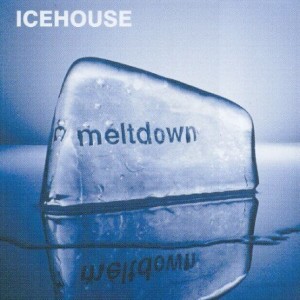Meltdown
 Do you know how many nuclear power plants we have in Illinois? Until a few days ago, I had never given it any thought. With the recent news about the damaged nuclear reactors in Japan (and the threat of radiation poisoning), I decided to investigate. In case you don’t know, we have 6 nuclear power generation plants in Illinois, located in the following cities and counties: Braidwood (Will County), Byron (Ogle County), Clinton (De Witt County), Morris (Grundy County), Marseilles (La Salle County), and Cordova (Rock Island County). The closest nuclear plant to Peoria is in Clinton, Illinois, which is approximately 62 miles from Downtown, Peoria.
Do you know how many nuclear power plants we have in Illinois? Until a few days ago, I had never given it any thought. With the recent news about the damaged nuclear reactors in Japan (and the threat of radiation poisoning), I decided to investigate. In case you don’t know, we have 6 nuclear power generation plants in Illinois, located in the following cities and counties: Braidwood (Will County), Byron (Ogle County), Clinton (De Witt County), Morris (Grundy County), Marseilles (La Salle County), and Cordova (Rock Island County). The closest nuclear plant to Peoria is in Clinton, Illinois, which is approximately 62 miles from Downtown, Peoria.
Based on what I’ve read, although there could be trace amounts of radiation that finds its way to the west coast (of the United states), it does not appear that anyone in the United States is in any danger of radiation poisoning. On the other hand, if there was ever a nuclear meltdown at the plant in Clinton, Illinois, the people of Central Illinois would be at risk of being exposed to dangerous amounts of radiation.
Although the words “nuclear meltdown” are thrown around all of the time, most of us don’t have any idea of what a nuclear meltdown really is. According to Webster’s Dictionary, a “meltdown” is: (1) the accidental melting of the core of a nuclear reactor; (2) a rapid or disastrous decline or collapse; or (3) a breakdown of self-control.
In our country, over the past 50 years or so, we’ve experienced several non-nuclear meltdowns, including the disastrous decline and collapse of the institutions of marriage and the family, our moral values, our manufacturing industry, our school system, and our financial system. Every year, more and more people turn to medications to keep from having meltdowns related to mental instability. Now, of all things, the world is confronted with the type of meltdown that we rarely hear much about: a nuclear meltdown.
Let’s start with what led up to the nuclear disaster in Japan. It began with a magnitude 9 earthquake, which was 16 times more powerful than what the nuclear reactors in Japan were designed to withstand. The earthquake was triggered by a “megathrust” that caused an area of the sea floor (larger than the state of Connecticut) to break away and shift. The shifting of the sea floor was so massive that it caused the entire island of Honshu to move eight feet to the east. Can you imagine an earthquake causing all of the houses in your neighborhood to break free from their foundations and move eight feet to the east?
The earthquake was followed by a tsunami (a massive sea wave) that washed away several coastal villages and killed an estimated 19,000 people. It’s hard to image the destructive power of a tsunami without seeing it with your own eyes. I watched a short video of the tsunami on YouTube and it was like watching a village of little plastic houses, hotels, and cars being completely washed off of a Monopoly game board with a fire hose.
The earthquake and tsunami caused serious damage to the reactors of 3 of the 55 nuclear power generation plants that are located in Japan. The reactors that were damaged are known as “boiling water reactors.” Simply stated, a reactor is designed to generate heat (from a nuclear reaction) which is used to boil water. The boiling water throws off steam that is utilized to drive turbines that generate electrical power. During normal operations, water is pumped around the reactor core to keep it cool (which is similar to the way a car engine is kept cool).
If a reactor is damaged, it has to immediately be shut down; however, even after a reactor has been shut down, it continues to generate an immense amount of residual heat that must still be cooled with water (coolant). Once a reactor has been shut down, it can no longer supply the power that is necessary to run the pumps that circulate the coolant. Every nuclear power generating plant has diesel generators as a backup power supply, to provide power for the pumps to continue to circulate coolant around the reactor.
If the pumping of the coolant stops, the remaining water around the reactor boils away. When the water is gone, the intense heat begins to vaporize and break down the fuel rods and the materials that make up the reactor core. As the fuel rods break down, more heat is generated, which can cause one or more explosions. This is what is referred to as a “meltdown.”
Most modern-day nuclear power generation plants are built with safety features that keep radiation from escaping, even in a situation where there is an explosion at or near the reactor core. The built-in safety features involve three separate safety vessels or containers. The reactor itself is located inside a “boiler.” The boiler is completely surrounded and enclosed by a large hardened steel “bottle.” The bottle is enclosed by a steel reinforced concrete and graphite “containment building.”
In the event of a meltdown, the damaged reactor should be completely contained by the steel bottle. If for any reason the steel bottle is damaged, then the outer containment building acts as a vessel to contain the damage and keep any radiation from escaping.
If you’ve been watching the news and reading up on the disaster in Japan, uninformed reporters have compared the situation in Japan with what happened in 1986 at the Chernobyl nuclear plant in Russia. Instead of three containment vessels, the Chernobyl plant was only built with two – the boiler and the containment building; therefore, when a meltdown occurred, the explosion that followed destroyed the containment building causing radiation to be released into the atmosphere.
Based upon everything I’ve read, the explosions that took place in the Japan were all contained within the steel bottle (the Chernobyl plant did not have a steel bottle that surrounded the boiler). The steel bottles and containment buildings for each of the damaged plants in Japan are still intact and doing the job they were built to do – contain the damage and radiation.
There were two primary reasons for the damage to the nuclear reactors in Japan: (1) the magnitude 9 earthquake; and (2) the tsunami which completely destroyed the backup generators for the damaged plants. Because of the destruction of the generators, there was no power source available to run the pumps that were needed to keep the coolant flowing around the reactors.
Some radiation has been release from the damaged plants because the operators of those plants allowed certain gases from the reactors to be vented. This was done to relieve pressure and to reduce the chances of an explosion. While an estimated 19,000 people may have been killed as a result of the tsunami, it appears as though less than 50 people may die from exposure to radiation. Those people are the workers who are still inside the outer containment buildings attempting to control the damage.
Next week I’m going to discuss what, if anything, we should be doing to protect ourselves and our families from a similar disaster that could occur in our own “backyard” – Clinton, Illinois.




1 Comment
Thank you, Harry. Your explanations/descriptions are most helpful! I’m looking forward to your follow-up safety suggestions.
Blessings, Sister Roberta